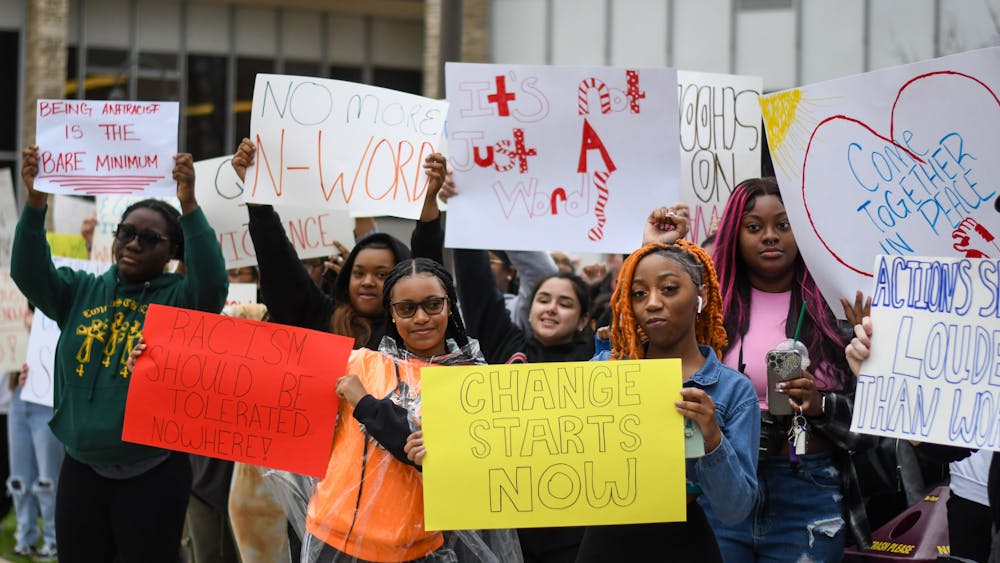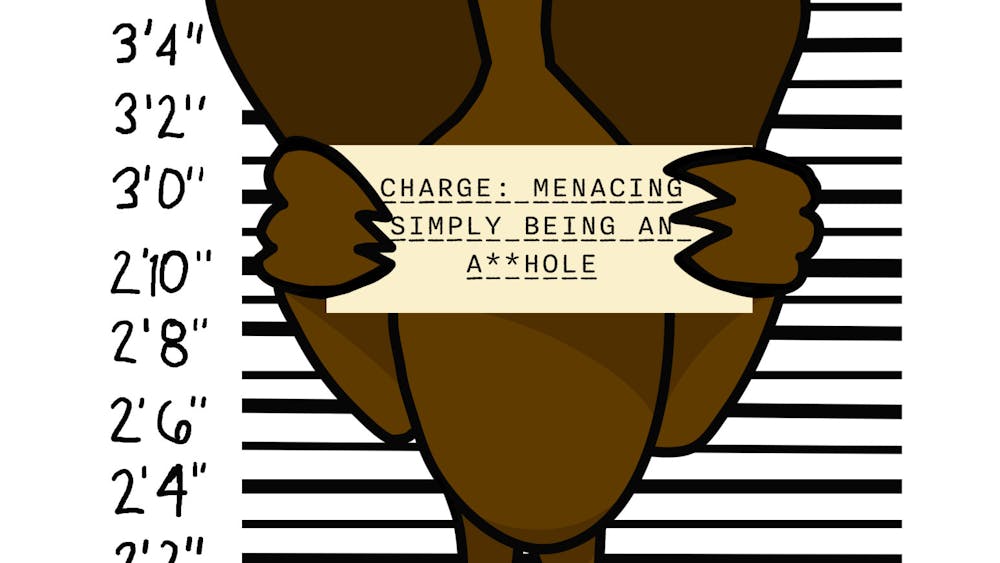Enrollment drop causes CMU problems as trustees approve $440.7-million operating budget
The Central Michigan University Board of Trustees unanimously approved a $440.7 million operating budget for the 2013-14 fiscal year at Thursday's board meeting in the Bovee University Center.
The budget is about $1.1 million smaller than last year's $441.8 million budget, due in large part to a projected 5-7 percent decrease in on-campus undergraduate enrollment, a projected 7-percent decrease in on-campus credit hours taken, a $12-million general fund deficit and a $6 million auxiliary fund deficit.
"This is a difficult budget," Vice President of Finance and Administrative Services David Burdette said at the meeting. "That much is clear."
Projected revenue in the general fund from on-campus tuition and fees is down substantially from last year due to the enrollment decrease. The university expects about $196.7 million from on-campus tuition and fees this year, down over 4 percent from last year's $205.6 million.
Likewise, revenue from residences and auxiliary services in the non-general fund is projected to be down nearly 8 percent from last year, to $68.2 million from $74.1 million, as a smaller number of students live on campus
Total revenue is down $1 million from 2012-13 after factoring in increased state appropriations, small increases in revenue from Global Campus tuition and fees and in other areas, and a combined $13.5 million from taken from CMU's general reserve and auxiliary funds to cover the deficits and balance the budget.
In total, the university will spend $227.6 million on employee compensation this year (up roughly $7 million from last year), and about $34 million will be doled out to scholarships and financial aid, up slightly from last year's $32.6 million.
Notably, the athletics department will receive $820,000 from the university for "Title IX/gender equity" projects and for other operations. Outside of salary adjustments and financial aid, that's the largest new strategic investment CMU made in this year's budget.
However, the university will spend more than $10 million less on supplies and equipment this year ($179 million, compared to last year's $189.1 million) to make up for lost revenue.
The university will also see less revenue coming in through the Events Center, public broadcasting and university health services as the number of students on campus falls.
President, trustees say CMU needs to find its 'right size'
Students are responsible for about 71 percent of the revenue the university receives in this year's budget. That's why a decrease in enrollment is so significant for CMU: even a small decrease in students would have significant effects on the yearly budget, let alone a decrease as large as the one the university is facing.
While acknowledging such a steep decline in enrollment is a serious issue and steps need to be taken to both attract and retain students, University President George Ross said the university should not aspire to be as large as it was in fall 2010, when enrollment was at its peak. That year, undergraduate enrollment stood at 19,368, compared to the roughly 17,500 expected on campus this year.
"The university will be even stronger as we look to establish the best size for CMU," Ross said. "In the 1980s, our on-campus enrollment stood at 16,000. CMU was vibrant, and CMU was successful."
He dismissed 2010 and 2011 as "anomaly years" when it came to enrollment.
"Whatever we determine CMU's best size is going forward, rest assured it will reflect the needs of our students first," Ross said.
Ross did not specify what that size would be at the meeting or after it, saying that number is still being determined.
"We can't just ebb and flow, though," he said. "We can't yo-yo like that."
Board of Trustees Chairman Brian Fannon agreed.
"We have to figure out the right number and stay there," he said. "It's not very easy to do."
Trustee Sarah Opperman told Burdette the operating budget should "ebb and flow" with any changes in enrollment, while allowing room for increased health care, retirement and related costs.
"For me, this underscores the need to understand where we want to be and how we sustain the budget at that level rather than tactically addressing it each year," she said.
That being said, this is the first year CMU has voted on a budget smaller than the prior year's since at least 1999-2000, the first year that annual operating budgets are publicly available online. Indeed, last year's $441 million operating budget was 2.8-percent larger than the 2011-12 budget, despite a roughly 2.2-percent decline in total enrollment.
Ross: 'We have great programs. That's why they'll come.'
Ross and Vice President for Enrollment and Student Services Steven Johnson blamed the shrinking enrollment numbers on a smaller number of high school graduates to choose from as the populations of Michigan and the Midwest region continue to shrink.
However, the university received a record number of applicants this year. Johnson said the number of applications was up 5-6 percent over last year, but many of the students that applied did not meet the university's standards of admission.
Johnson said the university is looking to recruit students beyond the state and the Midwest in order to maintain a steady level of enrollment without having to lower standards. The university is expanding recruiting efforts in the Southeast, including in states such as Florida, Texas and Georgia.
Johnson will present a final strategic enrollment plan to be voted on by the Board of Trustees in September.
Ross said he is confident the strength of certain programs, in addition to more specialized and more aggressive recruiting efforts, will be enough lead students to Mount Pleasant from other regions of the country.
"Students come from all over this country already," Ross said. "We have great programs. That's why they'll come."
In spite of pushing for more of a national presence, the president maintains that CMU will remain a university focused on serving the needs of the state.
"Ninety-five percent of our freshmen and 93 percent of our students are from Michigan," Ross said. "That's not a bad thing, but you see these major fluctuations in enrollment because of that. I think diversifying our student population from other states and foreign countries makes us stronger."
Despite future cuts, master plan still seen as viable
In the future, Ross said cuts will have to be made to positions in shrinking programs in order to keep the budget under control.
"Unfortunately, fewer students means colleges will need fewer part-time and fixed-term faculty," Ross said. "Additionally, some vacant staff and faculty positions will not be filled."
Despite looming cuts and decreased revenue, Ross said the university's 10-year campus master plan, which calls on the university to spend $400 million over 10 years on 18 projects, will be considered by the university come the fall.
"It's a guide. It's a roadmap," Ross said. "We're not necessarily going to take action on all those projects ... What's really important is we have to pair those wishes on capital projects with the priorities on our academic programs and our size. This will allow us to do that."
The plan includes the $95.2-million Biosciences Building, the $25.2-million Phase I construction of the College of Medicine's Saginaw campus and a $5.4-million east campus utility loop, which have already been approved by the trustees. The latter two were approved at Thursday's meeting, while the Biosciences Building was approved in April.
The Board of Trustees will next meet on Sept. 19.




